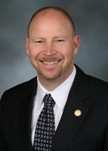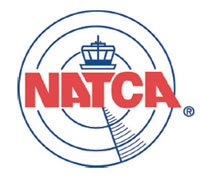Tue, Apr 26, 2011
Rinaldi: "It Is Safe To Fly"
 NATCA President Paul Rinaldi (pictured) has issued a call
for quick implementation of the fatigue recommendations released
jointly by the FAA and the union.
NATCA President Paul Rinaldi (pictured) has issued a call
for quick implementation of the fatigue recommendations released
jointly by the FAA and the union.
"Last week we began an open and honest dialogue with our members
about recent incidents and the reminder to always uphold the high
standard of professionalism and commitment to safety the public
expects," Rinaldi said in a statement. "Our members take seriously
the personal responsibility each of them has to act appropriately
and keep the flying public safe. I know we will win back the trust
and confidence of the flying public.
"During our tour, we discussed at length the largest underlying
problem that contributed to the majority of recent events: fatigue.
For more than a decade NATCA has expressed its deep concerns about
increasing controller fatigue. Our national constitution calls for
the ending of single staffing on the midnight shift and for years
we have lobbied past Administrations and Congresses on the need to
find solutions to controller fatigue before it is too late.
 Rinaldi said the union supports the FAA's recent action to
eliminate single staffing on the midnight shift. He said These
changes, however, barely scratch the surface of the problem. "The
work of the joint NATCA-FAA fatigue workgroup over the past 18
months has produced 12 recommendations based on established
scientific research and data and health practices. There is nothing
groundbreaking about these recommendations. They are common sense
solutions to a problem NATCA and fatigue experts have consistently
raised for years while past Administrations turned a blind eye. The
recommendations are based on advice from NASA and the military and
in line with international air traffic control best practices. If
we are serious about addressing controller fatigue, then every
recommendation must be adopted and implemented.
Rinaldi said the union supports the FAA's recent action to
eliminate single staffing on the midnight shift. He said These
changes, however, barely scratch the surface of the problem. "The
work of the joint NATCA-FAA fatigue workgroup over the past 18
months has produced 12 recommendations based on established
scientific research and data and health practices. There is nothing
groundbreaking about these recommendations. They are common sense
solutions to a problem NATCA and fatigue experts have consistently
raised for years while past Administrations turned a blind eye. The
recommendations are based on advice from NASA and the military and
in line with international air traffic control best practices. If
we are serious about addressing controller fatigue, then every
recommendation must be adopted and implemented.
"Congress must also finally pass the FAA Reauthorization, which
is now in its 18th extension. This legislation includes a number of
provisions addressing fatigue.
"Here's the bottom line: It is safe to fly. It has never been
safer to fly. Just this week, the NTSB announced that the safety of
the system had improved in 2010, with no fatal accidents recorded
on commercial flights. Air traffic controllers safely oversee
70,000 flights a day and run the safest, most efficient National
Airspace System in the world. You are safer riding on an airplane
in this country than riding an escalator.
"Air traffic controllers are committed to doing their part to
ensure safety and fix the problem."
More News
Terminal Radar Service Area Airspace surrounding designated airports wherein ATC provides radar vectoring, sequencing, and separation on a full-time basis for all IFR and participa>[...]
Very High Frequency (VHF) The frequency band between 30 and 300 MHz. Portions of this band, 108 to 118 MHz, are used for certain NAVAIDs; 118 to 136 MHz are used for civil air/grou>[...]
“From approximately November 2021 through January 2022, Britton-Harr, acting on behalf of AeroVanti, entered into lease-purchase agreements for five Piaggio-manufactured airc>[...]
Also: Virtual FLRAA Prototype, IFR-Capable Autonomous A/C, NS-32 Crew, Golden Dome Missile Defense Bombardier announced that the first production Global 8000 successfully completed>[...]
Aero Linx: The 1-26 Association (Schweizer) The Association’s goal is to foster the helpfulness, the camaraderie, and the opportunity for head-to-head competition that is fou>[...]
 ANN's Daily Aero-Term (05.29.25): Terminal Radar Service Area
ANN's Daily Aero-Term (05.29.25): Terminal Radar Service Area ANN's Daily Aero-Term (05.30.25): Very High Frequency (VHF)
ANN's Daily Aero-Term (05.30.25): Very High Frequency (VHF) Aero-News: Quote of the Day (05.30.25)
Aero-News: Quote of the Day (05.30.25) Airborne 05.23.25: Global 8000, Qatar B747 Accepted, Aviation Merit Badge
Airborne 05.23.25: Global 8000, Qatar B747 Accepted, Aviation Merit Badge ANN's Daily Aero-Linx (05.30.25)
ANN's Daily Aero-Linx (05.30.25)




